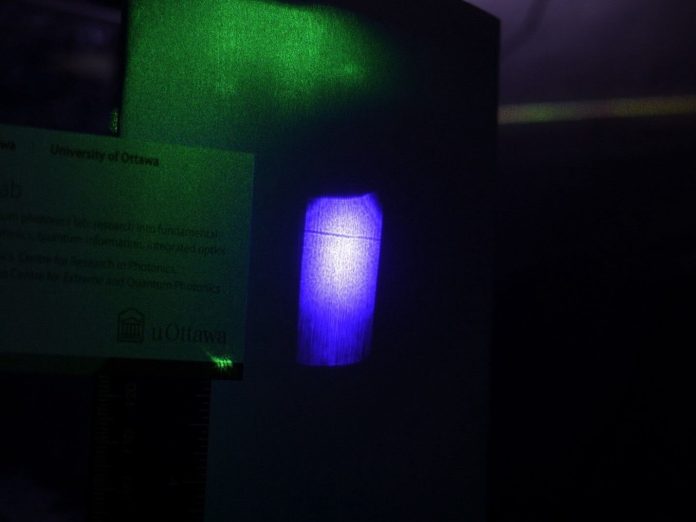
Can light cast a shadow?
It sounds like a tricky riddle, but researchers have shown that, under special conditions, a laser beam can block another light source and create a visible shadow.
This surprising discovery challenges what we thought we knew about light and shadows. It could also lead to new technologies where one beam of light controls another.
“Until now, it seemed impossible for light to cast a shadow because light usually passes right through other light without interacting,” said Raphael A. Abrahao, the lead researcher from Brookhaven National Laboratory.
“What we’ve demonstrated is a strange and unexpected effect that makes us rethink how shadows work.”
The researchers described their breakthrough in the journal Optica. They used a ruby crystal and two laser beams with different colors—green and blue.
When the green laser entered the ruby, it changed the way the crystal responded to the blue light. This interaction created a dark area, a shadow, where the green laser blocked the blue light. To the naked eye, it looked like the green laser had become a solid object casting a shadow on the blue light.
The effect comes from something called a nonlinear optical process. This happens when light interacts with a material in a way that depends on the light’s intensity. The green laser, in this case, changed the ruby crystal so that it absorbed some of the blue light. This absorption created a shadow that followed the shape of the green laser beam.
“This shadow meets all the criteria of a real shadow—it is visible, matches the surface it falls on, and follows the position and shape of the green laser beam,” explained Abrahao.
The idea for this experiment began during a casual lunch among scientists. They were discussing how 3D visualization software often shows laser beams as solid cylinders that can cast shadows. This led to a playful question: Could lasers actually cast shadows in real life? What began as a fun conversation turned into a serious experiment.
“We wondered if this was something we could prove in the lab,” said Abrahao. “And that curiosity led us to discover a truly fascinating effect.”
Shadows are a simple everyday phenomenon, but this discovery expands our understanding of how light interacts with matter. It also opens new doors for technology. For example, the ability to use one laser to control another could lead to advances in optical devices. These devices are used in telecommunications, high-power lasers, and even future quantum technologies.
“This discovery could be the foundation for optical switches where one laser turns another on or off,” said Abrahao. “It could also help in systems that need precise control of light, like in high-power laser applications.”
The researchers measured how strong the shadow effect was by looking at its contrast—the difference between the dark shadow and the surrounding light. They found that the shadow could reach a contrast of about 22%, which is similar to the shadow of a tree on a sunny day. They also created a theoretical model to predict the shadow’s contrast, and it matched their experimental results perfectly.
The team plans to study other materials and laser wavelengths to see if they can create similar effects. They believe this is just the beginning of a deeper exploration into how light interacts with light and matter.
“This discovery makes us see light in a whole new way,” said Abrahao. “It’s a reminder that even with something as familiar as light, there are still mysteries waiting to be uncovered.”



